About the Project
Maps & Plans
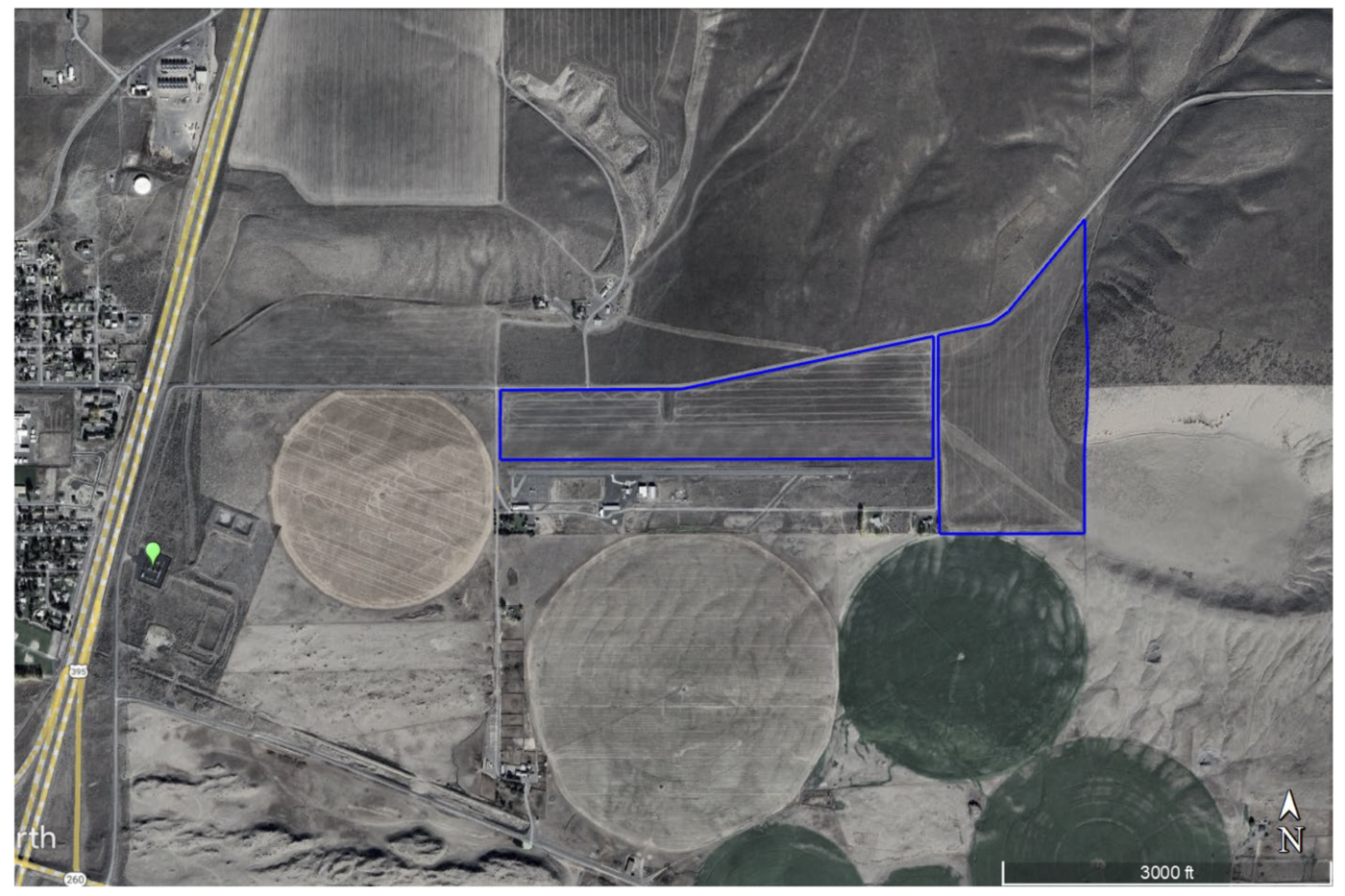
Project Area Plan
The Project would sit within two parcels, which encompass 140 acres of vacant land. The final fenced Project area would include approximately 80 acres of the property.
OneEnergy is working closely with Franklin PUD to connect the project to the local grid and in order to serve the local community’s electricity demand.
The Project would consist of single-axis tracking, ground-mounted, solar photovoltaic modules. Visualizations are provided below.
Project Visualizations
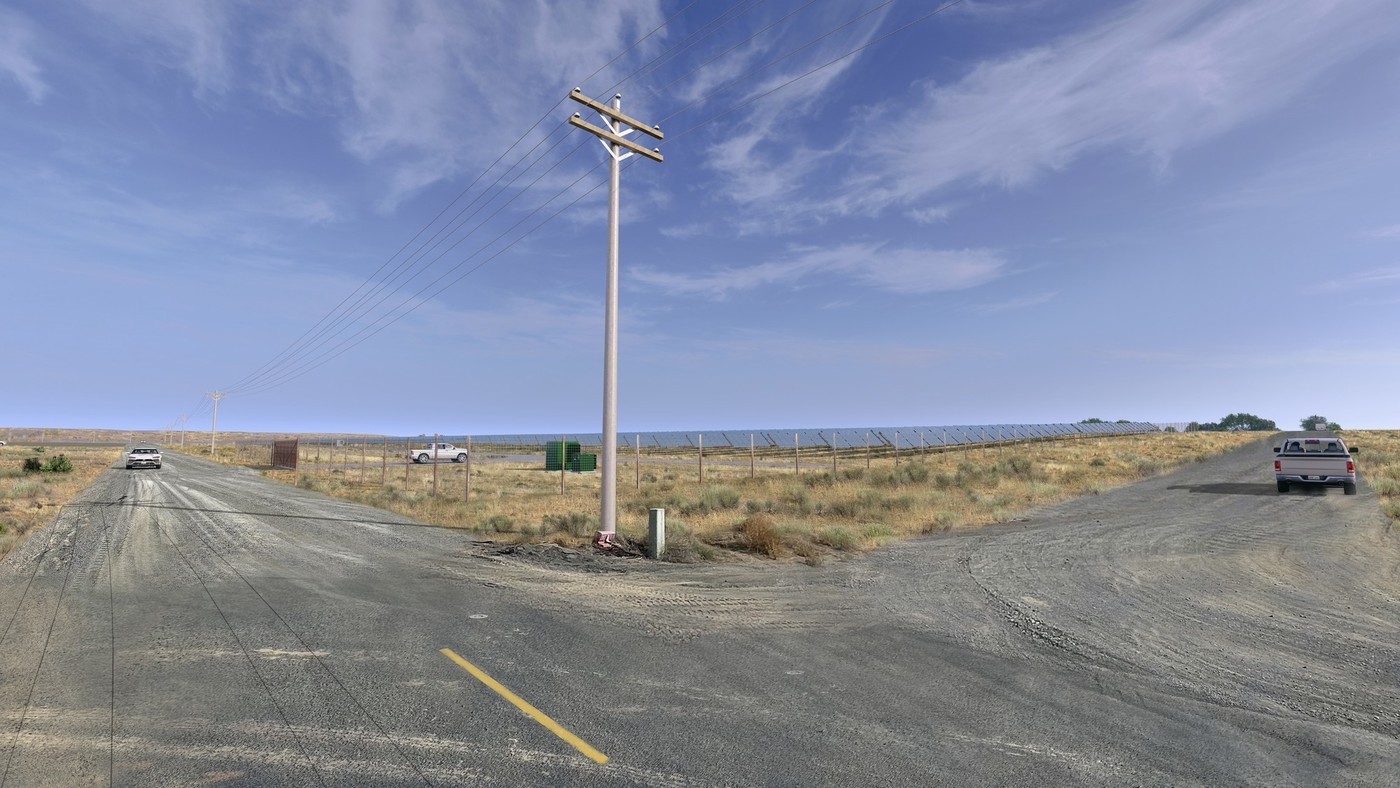
Rendering #1
This photo rendering illustrates what the Project will look like and has been created to scale. This photo is taken from the northwest corner of the Project area and faces southeast towards the Project.
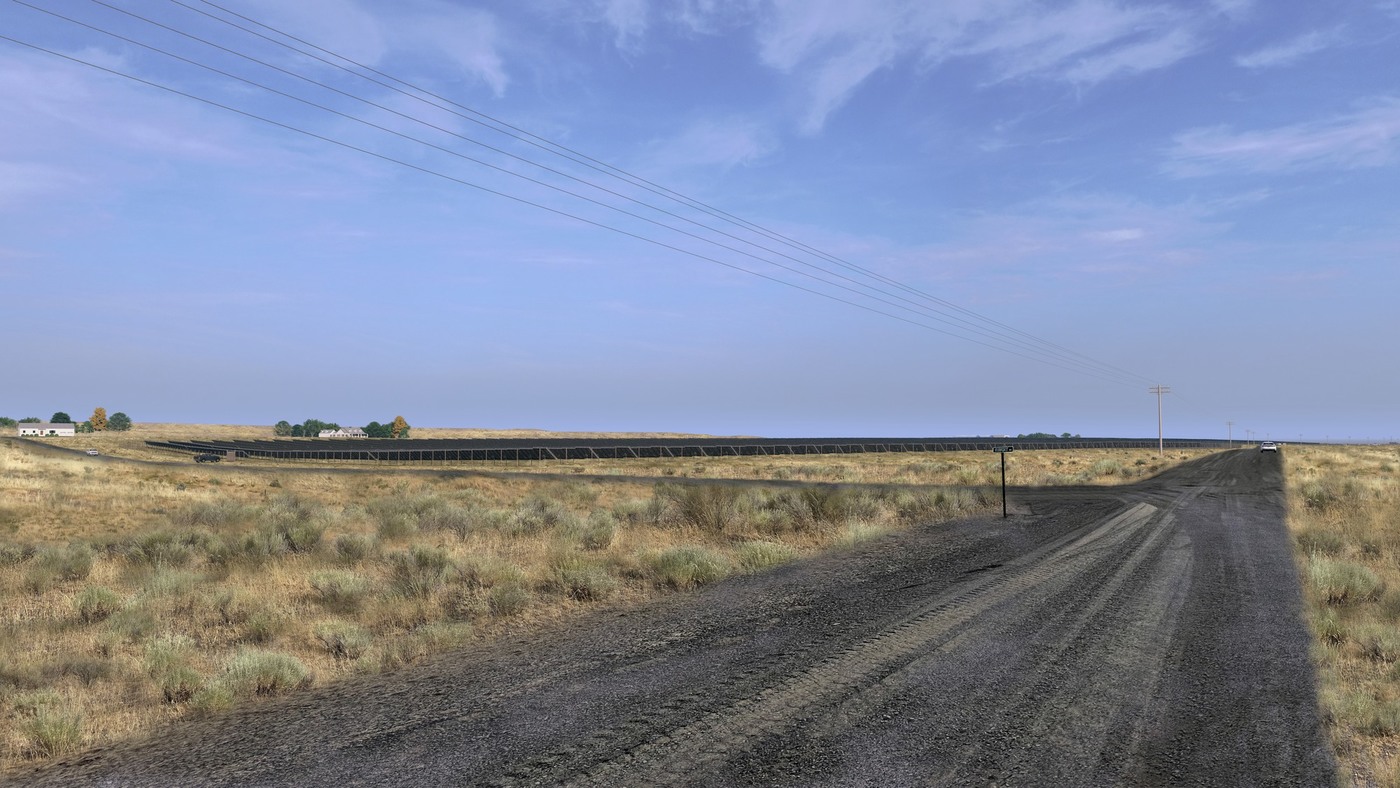
Rendering #2
This photo rendering illustrates what the Project will look like from the northeast corner of the Project area and faces southwest towards the Project.
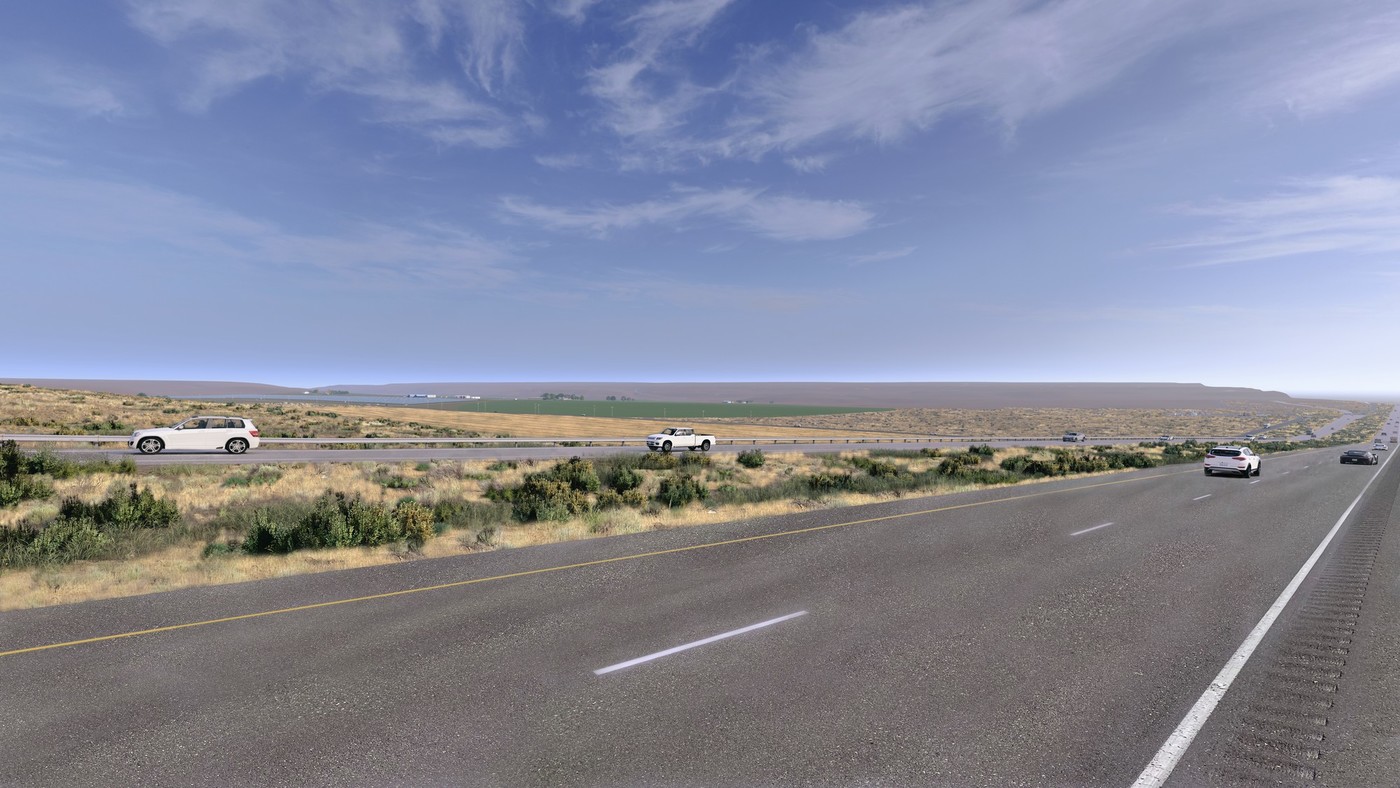
Rendering #3
This photo rendering illustrates what the Project would look like from Highway 395, just north of Connell. The view is facing southeast towards the Project.
Project Characteristics
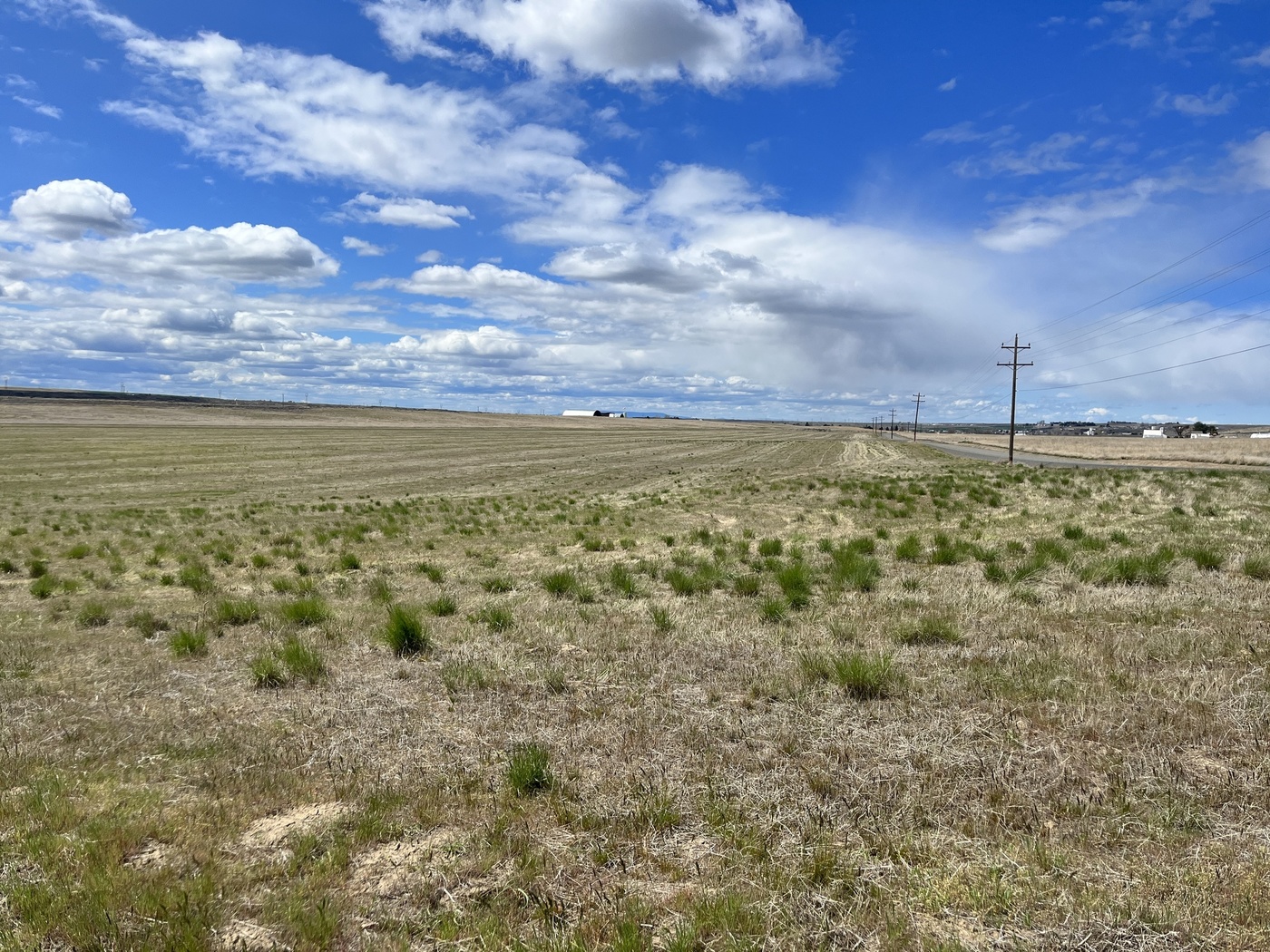
Land Use, Zoning, and Permitting
The Palouse Junction Solar Project will be located on private land that is currently vacant, uncultivated, and unirrigated, with no water rights and no prime farmland.
The parcels that the Project will be sited on are zoned as General
Industrial (I-2) and Agriculture (AP-40), both of which require a conditional use permit for power-generating facilities or power plants, such as solar facilities.
Permitting for the Palouse Junction Solar Project will be completed through Franklin County.

Roads, Infrastructure & Services
Public roads used to access the Project during construction and operations will be left in the same or better condition than they were prior to Project construction. Primary access to the Project will likely be from Airport Lane (a private drive) via Nordheim Road.
Apart from public roads, the Palouse Junction Solar Project will not use any other local infrastructure. The Project requires no permanent source of water (groundwater wells or otherwise) and does not need sewer service.
OneEnergy will coordinate with the Franklin County Fire Marshall through the design process to ensure that the Project meets the fire department’s code and standards.
The Project will tie into Franklin PUD’s electric system and will supply energy to the local electricity distribution grid. No other utility services will be required for the Project.
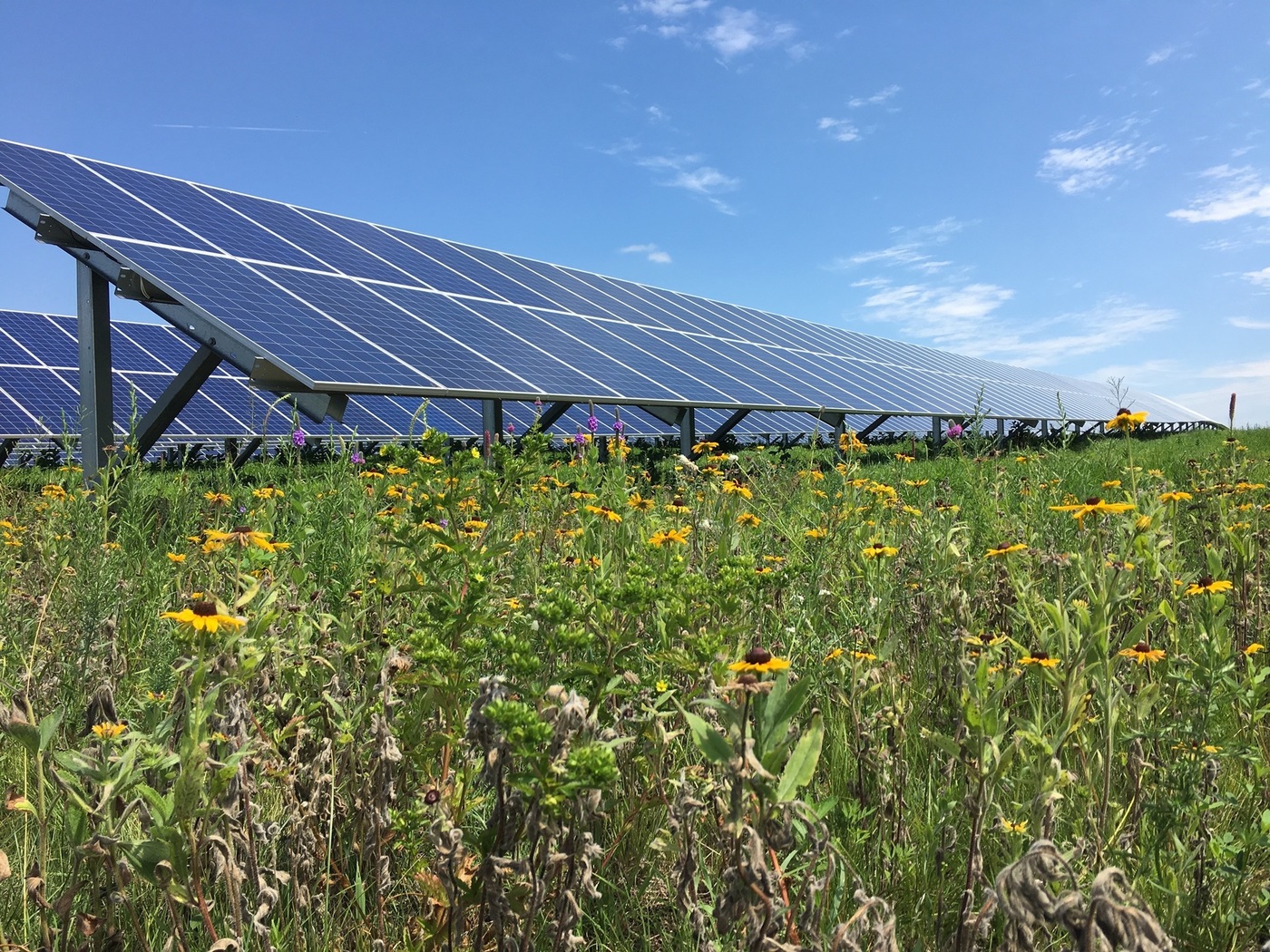
Wildlife & Habitat
A wildlife and habitat survey was conducted on the Project site in 2023. No sensitive or protected species were found to be present or nesting on the site. All but 0.3 acres of the Project area were identified as pasture. The small patch of shrub steppe habitat is located in a single patch along Nordheim Road.
No nesting substrate was identified in the Project area.
OneEnergy has been in consultation with the Washington Department of Fish and Wildlife (WDFW) and will continue consultations through final design and construction planning and execution.
Wetlands, Water, & Stormwater
A wetlands survey was conducted on the Project site in 2023. No wetlands were identified on site. One intermittent stream was identified near the eastern boundary of the Project Area, which will be accounted for during design in consultation with Washington Deptartment of Ecology.
A FEMA 100-year floodplain bounds the identified intermittent stream. This area will be avoided during facility design or will be designed in
consultation the county and state officials.
To protect water quality during both construction and operation of the Project, OneEnergy will design the Project to comply with all relevant and applicable standards and regulations for stormwater management. OneEnergy plans to accomplish this compliance through employment of temporary and permanent Best Management Practices.
Where possible and to the best extent feasible, Best Management Practices (BMPs) include:
- Preserving the existing vegetation.
- Designing the project to be compatible with the existing topography, soils, and vegetation.
- Scheduling grading and construction to minimize soil exposure.
- Inspecting and maintaining control measures during construction.
- Minimizing concentrated flows and diverting runoff away from exposed areas.
- Minimizing slope grade and length.
- Keeping runoff velocities low by using channel linings or temporary structures in drainage channels.
- Preparing drainageways and outlets to handle concentrated or increased runoff.
- Using flagged poles or stakes to mark storm drains, catch basins, curb inlets, and other BMPs
- Vegetating and mulching disturbed areas.
Restoration, Reclamation, and Revegetation
At the end of the project’s life, OneEnergy will be responsible for removing the facility improvements and restoring the land to its original use. This will include the removal of roads on the site, soil treatment as necessary, and revegetating any areas disturbed during the removal of the solar facility. Equipment such as the solar panels will be recyled and equipment such as steel beams, fencing and wire will be salvaged.
